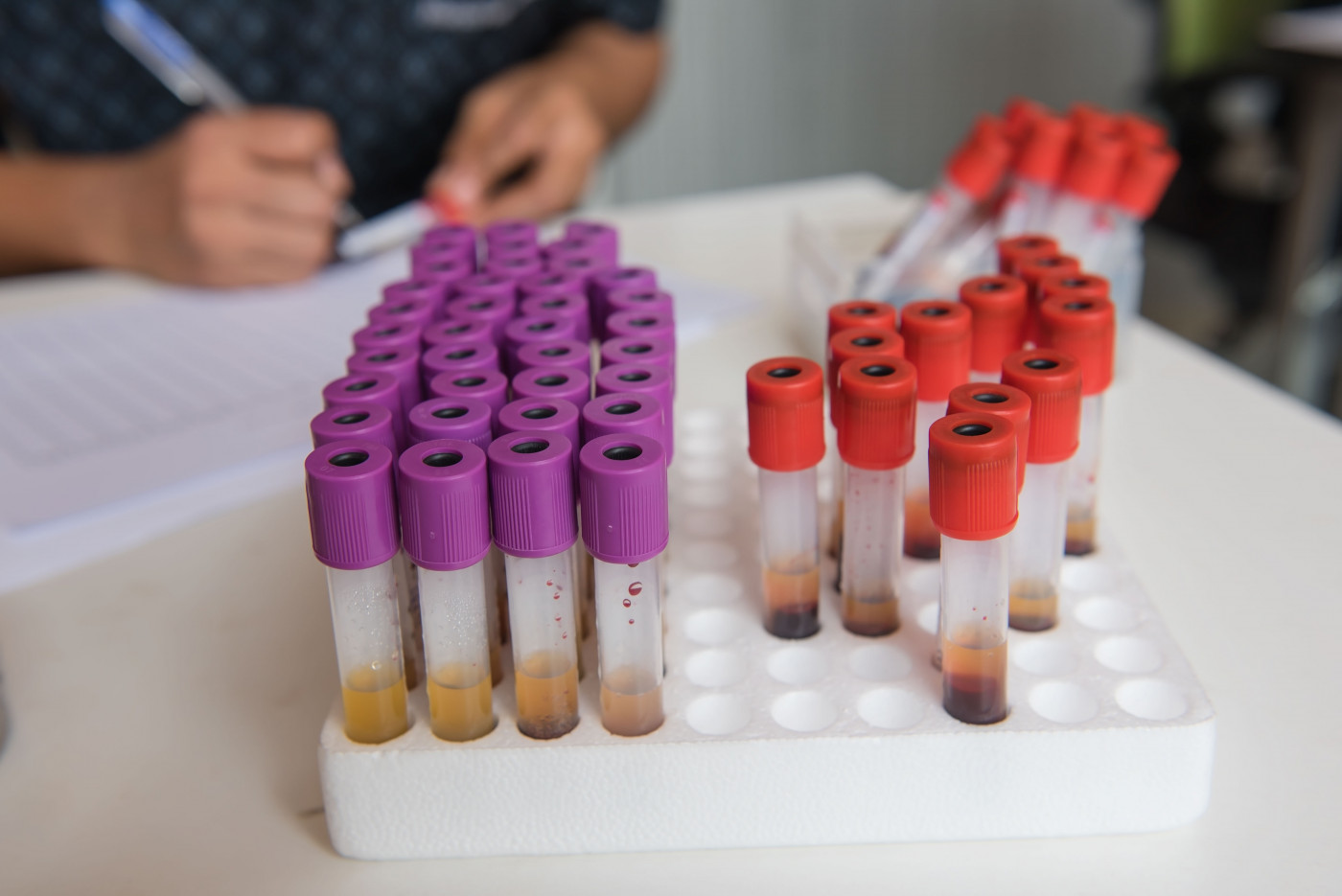SBMA Severity Associated With Altered Muscle, Not Neuronal, Biomarkers, Study Shows
Written by |

Blood levels of biomarkers of muscle mass and damage — rather than nerve cell damage — are significantly altered in people with spinal and bulbar muscular atrophy (SBMA) and in a mouse model of the disease, a study has found.
Data also highlighted that the levels of creatinine, a biomarker of muscle mass, were associated with disease severity, suggesting its use to monitor disease progression and treatment response.
These findings support the previously reported role of muscle damage in SBMA and the development of disease-modifying therapies targeting the muscle.
The study, “Muscle and not neuronal biomarkers correlate with severity in spinal and bulbar muscular atrophy,” was published in the journal Neurology.
SBMA, also known as Kennedy’s disease, is a type of spinal muscular atrophy characterized by widespread muscle weakness and wasting in the arms, legs, head, and neck that starts in adulthood.
The disease typically affects men only, as it is caused by mutations in the androgen receptor (AR) gene, involved in testosterone signaling and located on the X chromosome. Since men have one instead of two X chromosomes, AR mutations in one X chromosome cannot be compensated by the healthy AR gene present in the other chromosome, as is the case in women.
While loss of lower motor neurons is a hallmark of the disease, studies in animal models of SBMA have shown that reverting AR mutations specifically in the muscle halted the development or progression of the disease. This suggests that muscle damage itself plays a major role in SBMA.
Identifying disease biomarkers in SBMA may help to diagnose, predict, and monitor disease progression, and/or evaluate treatment responses in clinical trials.
In the study, researchers set out to evaluate whether blood biomarkers of nerve cell damage (neurofilament light chain), muscle damage (creatine kinase), and muscle mass (creatinine) were altered in SBMA patients and associated with disease severity.
Neurofilament light chain (NfL) are proteins involved in maintaining nerve cell structure and their presence in the blood is a sign of nerve cell degeneration. Creatine kinase (CK) is an enzyme that leaks out of muscles as they deteriorate.
Creatinine is a waste product of the normal breakdown of muscle tissue — with low creatinine levels indicating low muscle mass. Previous studies have suggested that creatinine could be used as a biomarker of SBMA before and after symptom onset.
The new study involved 93 SBMA patients: 50 recruited at the National Hospital for Neurology in London, U.K., and 43 at the University Hospital in Padova, Italy; 53 people with amyotrophic lateral sclerosis (ALS), another type of motor neuron disease; and 73 healthy relatives of patients.
Blood levels of NfL, CK, and creatinine were analyzed in all participants. Blood levels of NfL were also evaluated in a mouse model of SBMA.
SBMA severity was assessed using the SBMA Functional Rating Scale and the Adult Myopathy Assessment Tool at the study’s start and after one and two years.
Results showed that blood levels of NfL were significantly increased in ALS patients, as previously reported, but similar to healthy individuals in both groups of SBMA patients. In mice, NfL levels were also similar between the SBMA mouse model and healthy (control) animals.
At one year (28 patients) and two years (eight patients), the levels of NfL were found to be generally stable over time, confirming the unaltered nature of these levels in SBMA patients. Moreover, NfL levels were not associated with disease severity in these patients.
“This is surprising given that NfL has been described to be increased in numerous neurodegenerative conditions and mouse models,” the researchers wrote.
Conversely, SBMA patients had significantly higher levels of CK and lower levels of creatinine, compared with healthy individuals and ALS patients. Notably, while CK levels did not correlate with clinical measures, creatinine levels were strongly and significantly associated with disease severity in SBMA patients.
The team noted that the lack of an association between CK levels and disease severity may be associated with “its reflection of more acute muscle damage,” and that creatinine findings were consistent with a couple of previous studies, supporting its role as a valuable biomarker in SBMA.
“This is consistent with previous observations that a primary [muscle damage] component plays a primary role in the disorder and supports the development of novel disease-modifying agents towards the muscle target and the incorporation of muscle biomarkers to objectively assess outcomes in therapeutic trials in SBMA,” the researchers wrote.
Also, since a substantial proportion of patients with SBMA are initially misdiagnosed with ALS, the detection of normal levels of NfL in patients could help to distinguish between the two diseases, the team noted.
“No therapy is currently available for SBMA and an important limitation to trials for promising therapeutic strategies has been the lack of effective outcome measures. Biomarkers to measure disease progression and therapeutic responses are therefore strongly needed,” they added.






